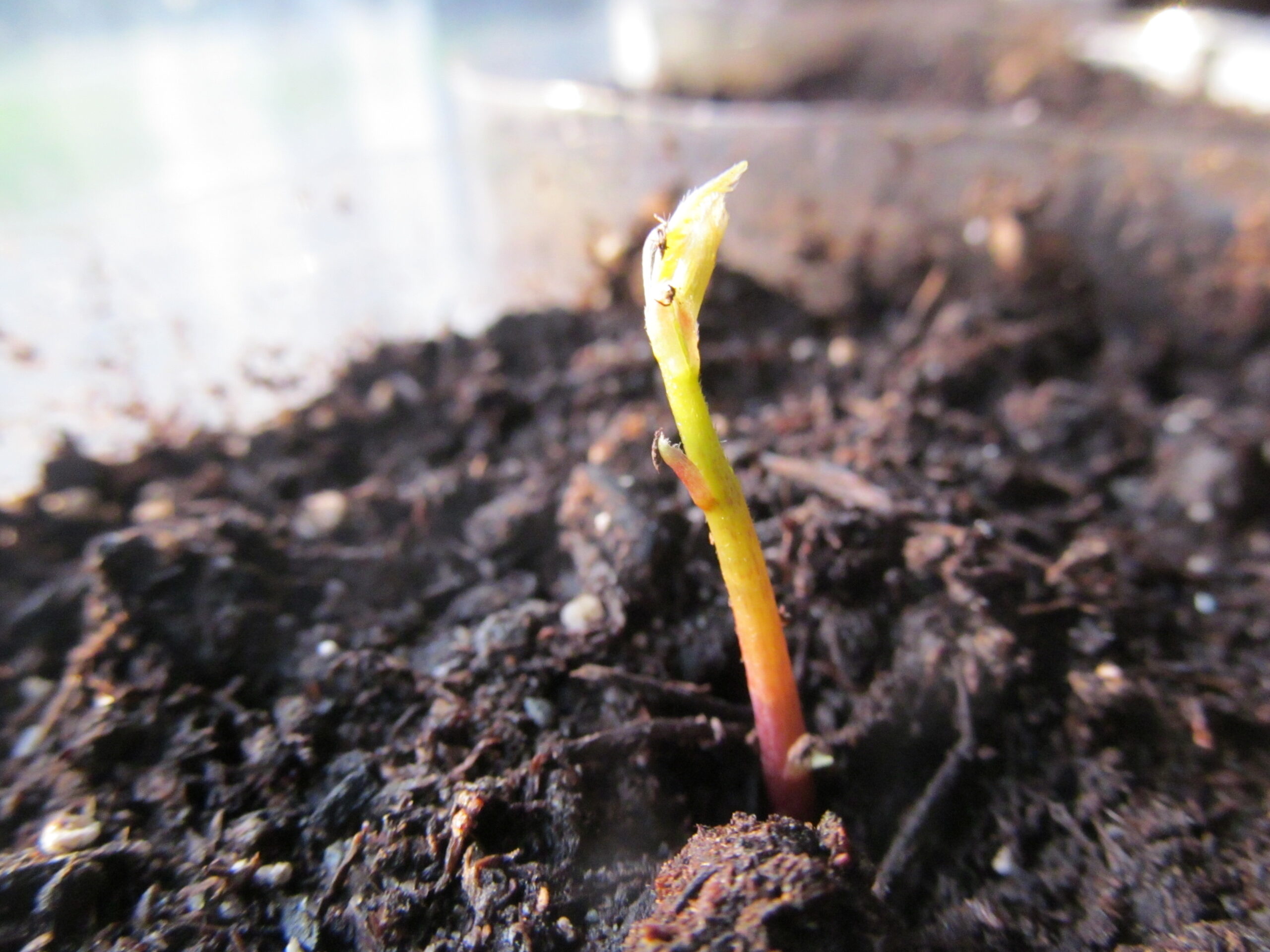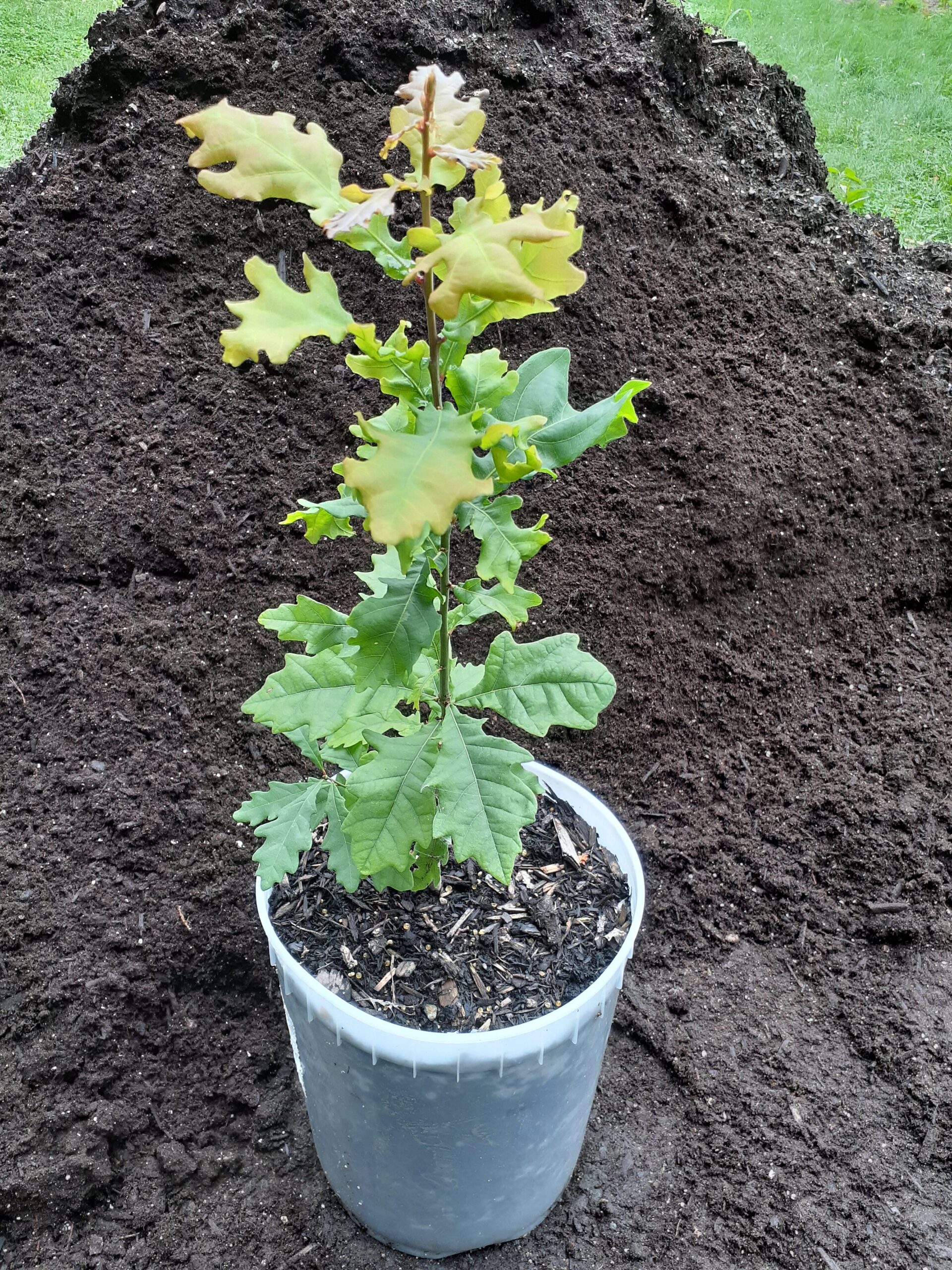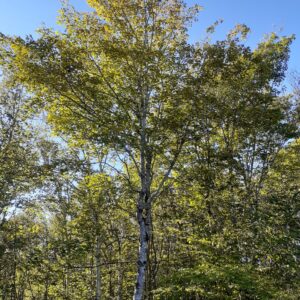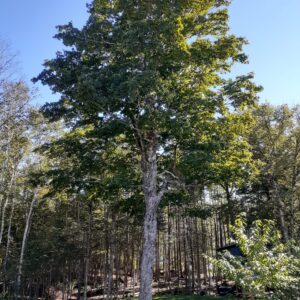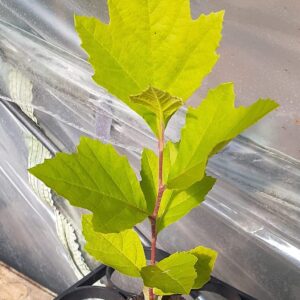English Oak
(Pedunculate Oak)
Quercus Robur
A large, long-lived, iconic shade tree native to Europe that was once used for building ships and cathedrals. Has held great cultural and religious significance throughout history. Attractive dark-green, lobed leaves and large acorns that provide valuable food for local wildlife. The acorns are edible to humans if the tannins are leached out. Trees have both male and female flowers on the same tree and are wind pollinated but set seed better when more than one tree is present. Takes about 20 to 30 years to set seed and can produce hybrid seeds if planted near other oak species from white oak group.
Additional information
| Foliage | Deciduous |
|---|---|
| Locale | Native to Europe |
| Height | Large (60-100ft) |
| Width | Wide |
| Form | Broad, Round |
| Growth Rate | Slow |
| Longevity | Long (over 100 years) |
| Hardiness Zones * | 4, 5 |
| Sun Exposure | Full Sun (over 6 hrs), Partial Sun (4 to 6 hrs) |
| Soil Preferences * | Moist, Slightly Acidic, Well Draining |
| Soil Tolerances | Clay, Dry, Slightly Alkaline |
| Other Tolerances | Occasional Drought, Road Salt, Urban Pollution |
| Ornamental Interest | Leaves (shape) |
| Wildlife Value | Bees (flowers), Birds (fruits/seeds), Butterfly Larvae (leaves), Large Mammals (fruits/seeds), Small Mammals (fruits/seeds) |
| Human Value | Carpentry (wood), Edible (seed), Fuel (wood) |
| Seed Collection | Relatives in UK |
| Planting Considerations | Casts Deep Shade, Messy Seed Litter |



